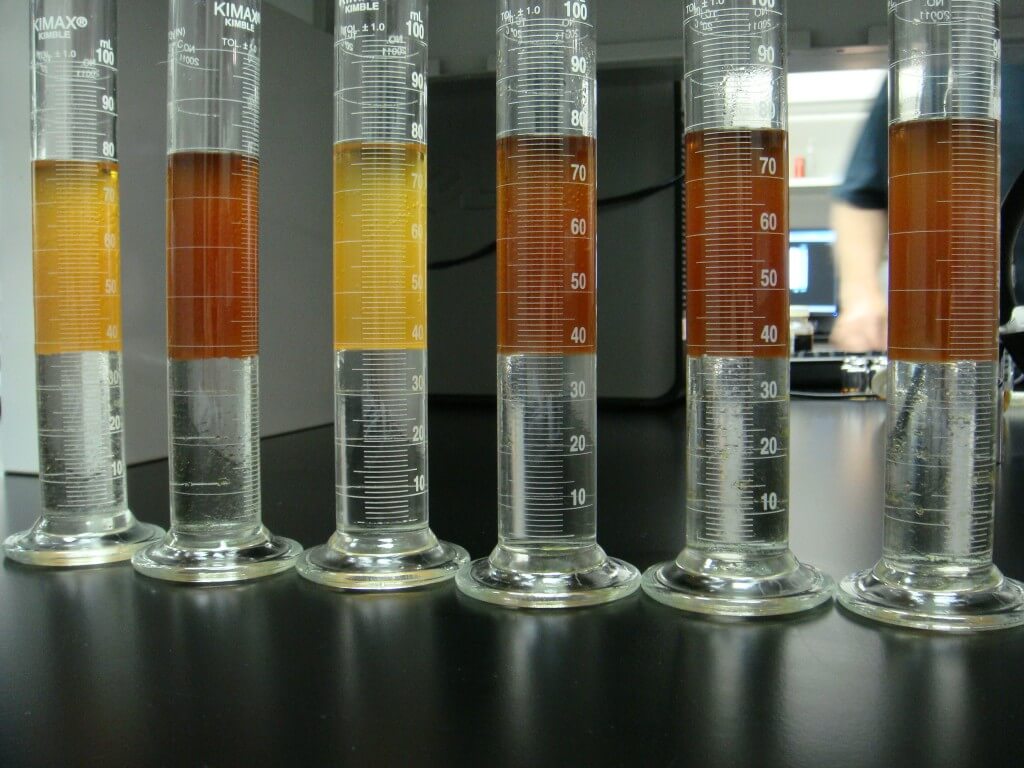Demulsibility
Demulsibility measures an oil’s ability to release water. Water shedding characteristics are important to lube oil systems that have potential to have direct contact with water. Demulsibility can be compromised by excessive water contamination or the presence of polar contaminants and impurities.
Water that enters a hydraulic system can emulsify (mixing of oil and water) and promote the collection of dust, grit, and dirt, which can adversely affect the operation of valves, servos, and pumps. It can also increase wear and corrosion, promote fluid oxidation, deplete additives, and plug filters. Highly refined mineral oils permit water to separate or demulsify readily. However, some additives such as anti-rust treatments actually promote emulsion formation to prevent separated water from settling and breaking through the anti-rust film.
The impact of demulsibility depends on the system residence time and anticipated levels of water contamination. Demulsibility testing can show failure in the lab, but with sufficient residence time, turbine oil may shed water at an acceptable rate that doesn’t impact turbine oil performance. Small sumps with lower residence times require better demulsibility performance than larger sumps. Testing for demulsibility should be conducted on an annual basis, if the lube oil system is exposed to water, or demulsibility performance is suspect.
Operating Principle
Equal portions of water and oil are blended together at a set temperature for a predetermined amount of time to produce an emulsion. The mixture is then allowed to separate. The amount of oil, water and emulsion is recorded at 5 minute intervals. A result of 3 mL or less emulsion within 30 minutes for oils with viscosities less than 90 cSt or within 60 minutes for oils with viscosities greater than 90 cSt is considered acceptable. Results are reported in the format: mL oil / mL water / mL emulsion (time in minutes).
After 60 minutes this sample passed. It contained 40 ml of oil, 40 ml of water and 0 emulsion. This sample separates water and therefore, has good demulsibility. ASTM method - D1401.
Significance
This test is crucial for critical equipment that may be at risk for water contamination. The inability of a lubricant to separate from water will result in fluid degradation, corrosion of components, and potential failure due to improper lubrication.
Applications
This test is commonly used for lubricants from systems which have a risk of frequent or large scale water contamination to ensure adequate ability to separate from water. A minimum of 80 ml of sample is needed to perform this test.


